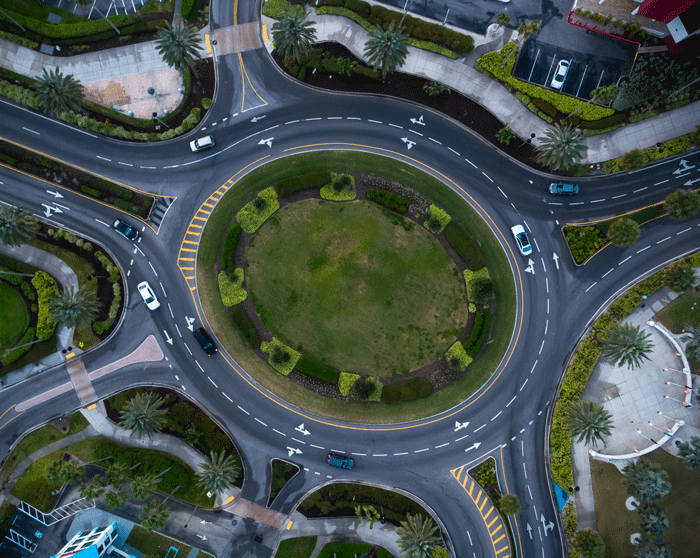Innovative intersection and interchange designs and their use across the Southeast
Research Team

Dr. Angshuman Guin, Georgia Institute of Technology
Chris Cunningham, MSCE, PE, North Carolina State University/ITRE
Dr. Ali Hajbabaie, Ph.D., North Carolina State University
Dr. Tabitha Combs, University of North Carolina Chapel Hill
Dr. Michael Rodgers, Georgia Institute of Technology
What is the current issue? A need to improve the operational and safety performance of “conventional” intersection and interchange designs has been noted in the past decade and several “unconventional” (or “alternative”) intersection and/or interchange design approaches have been proposed and/or implemented as a replacement for more “conventional” designs. Some of these approaches, notably the roundabout, have demonstrated significant safety and delay benefits and have been implemented on a scale that such designs are no longer considered “unconventional”. Other unconventional intersections have been designed and constructed such as the Median U-Turn or MUT (formerly the “Michigan U-Turn”), the Restricted Crossing U-Turn or RCUT (formerly the “Superstreet”), Divergent Left Turn or DLT (formerly the “Continuous Flow Intersection”), and the Quadrant Intersection. Although many states have aggressively pursued implementation of these intersections, there is still a demonstrated need to provide additional insight on the design, operation and safety of these unconventional intersections.
What will the research produce? Researchers hope to provide additional insights by both evaluating the use of existing innovative intersections and supporting further implementation through the following:
- Improve the body-of-knowledge of individual State DOTs regarding best-practices in the design, implementation, and operational, safety, and comfort benefits of such intersections.
- Extend the use of movement-based safety performance functions to unconventional grade separated intersections.
- Improve the understanding of State DOTs as to both the needs and mechanisms for accommodating non-motorized (e.g. bicycle and pedestrian) movements through these designs.
- Provide State DOTs with a better range of tools to both select type and design elements of innovative intersections and to be able to compare these intersections with more traditional designs.
- Apply Naturalistic Driving Data to improve the operational analysis using simulation tools.
- Developing improved methods of training and communication to designers, decision-makers, and the general public on both how these intersections work and their operational, safety, and comfort benefits.